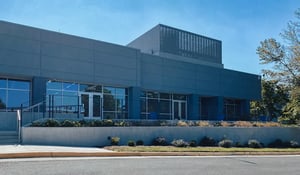
Multi-Tenant Data Centers: When it’s Time to Move Off-Site
Not long ago, businesses were accustomed to controlling and managing their IT infrastructure in-house. But the way the world does business has changed immensely as enterprises of all kinds adapted to an increasingly online model and rising investments in digital tools to support it. Thus began the migration out of on-premises data centers to multi-tenant data center facilities.
Businesses that once operated in their own digital siloes now find it advantageous to outsource their IT infrastructure, data processing and application hosting – to save money, improve operations and better serve their customers.
What is a Multi-Tenant Data Center?
Multi-tenant data centers (MTDCs), also called colocation data centers, are large facilities shared by organizations to host their IT infrastructure and services. MTDCs provide floor space, power, access to communications networks, operations and maintenance services, and physical security for deployments ranging from a single server to multiple servers and switching gear in racks, cages or an entire floor.
Clients reap the benefits from multi-tenant data center capabilities supporting new technologies and address infrastructure complexities that would otherwise be challenging if handled in-house. Today’s colocation facilities are much more than carrier hotels, where multiple networks interconnect. Instead, they also provide access to the digital ecosystems that were born out of ongoing digital transformation. Clients of multi-tenant data centers can interconnect with business partners, digital platform providers and public clouds to support and grow their businesses.
Advantages of Multi-Tenant Data Center
Building and managing an onsite (on-premises) data center typically results in unrecoverable costs. In other words, the IT team managing the data center becomes overly focused on maintaining the facility and equipment, so they cannot dedicate time to IT-driven growth strategies. It’s a net negative.
The costs involved in keeping a data center onsite extends to the wider business: Building and maintaining data storage in-house, managing power, making repairs, ensuring security, and the physical footprint of the data center affect the business beyond these factors alone.
The factors decision-makers consider in merging some or all IT operations to a multi-tenant facility typically involve reducing IT costs or budget. While each business has its own IT objectives and requirements, the fast-changing digital environments of today have left many gaps in the traditional in-house model – resulting in more reasons to embrace off-site solutions.
Other primary challenges include:
- Space limitations that prevent IT infrastructure from expanding along with the company’s IT demand, or structural constraints that are unable to support modern IT infrastructure.
- Outdated equipment that requires significant investment and time to upgrade.
- Power and cooling challenges that simply cannot be adequately met due to the increase in heat generated and power required by high-density servers.
- Physical security staff to protect IT infrastructure and sensitive data, 24 hours a day, seven days a week.
- Disaster recovery and business continuity requirements to establish off-site, redundant operations.
- Compliance requirements for storing and processing sensitive data.
- The need to accelerate growth and streamline costs by leveraging ready-made, high-performance solutions and partnerships.
The Benefits of a Multi-Tenant Data Center
MTDCs provide the facilities and ecosystem that companies require to scale, connect and increase the performance of their core operations and services. That means businesses which invest in outsourcing their digital infrastructure do not build, host or maintain it themselves – as a result, they achieve significant reductions in their operating expenses.
The growth of the multi-tenant data center (MTDC) industry has been fueled by well-documented financial advantages over internal facility models — including lower total cost of ownership (TCO) and more predictable budget forecasting for data center costs.
But sometimes its not just about the bottom line. Well-designed MTDC facilities provide businesses with a way to address numerous challenges, including:
- Security: MTDCs offer protection against both cyber (by adding a solution provider to the tech stack) and physical threats by preventing unauthorized access to client systems.
- Reliability: Fully redundant network connections and power sources (e.g. batteries and generators) ensure a client’s infrastructure runs uninterrupted, even in cases of power outages or natural disasters. Don’t forget that operations personnel are onsite 24X7 to respond to issues.
- Scalability: As infrastructure requirements grow, MTDCs enable clients to scale space and connectivity.
- Interconnectivity: MTDCs connect clients to a robust ecosystem of network, cloud and solution providers.
Multi-tenant data centers offer businesses a viable way to migrate some or all of their data center services, while gaining flexibility and responsiveness to ever-changing demands.
Multi-Tenant Data Center Migration
For many businesses, the shift to a MTDC (whether for all or part of its IT infrastructure) is critical to maintaining a competitive edge in this ever-growing digital economy. Businesses are quickly becoming more virtual – moving what was once in the physical space to the vast online universe.
Today, the immense volume of data that businesses manage day-to-day continues to expand as technologies and tools advance – leaving even more opportunities to develop new digital services and grow new revenue streams.
Is your business ready to make the switch to a multi-tenant data center facility? Contact us to learn about how we can support you on your journey or read this ungated white paper to dig deeper into the considerations involved in a successful migration.










